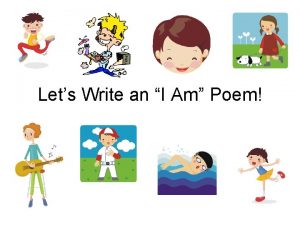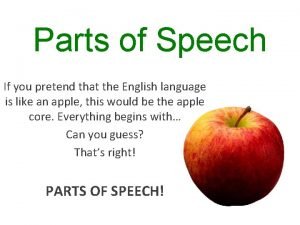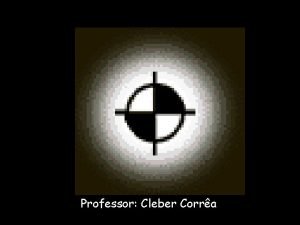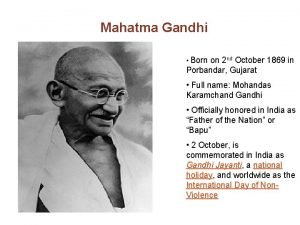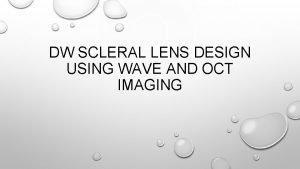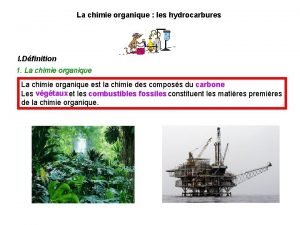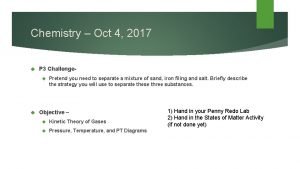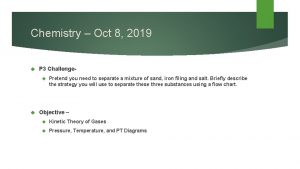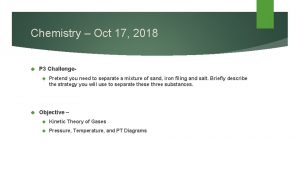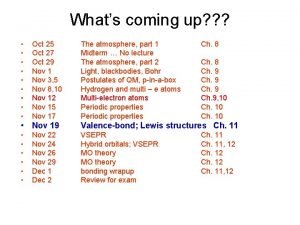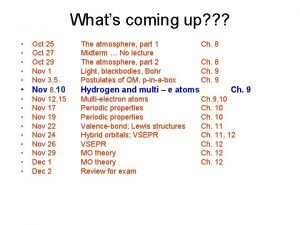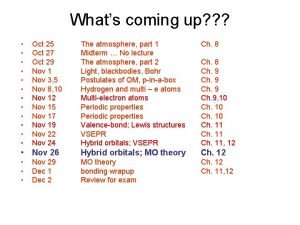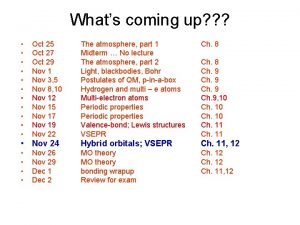Chemistry Oct 10 2016 P 3 Challenge Pretend











- Slides: 11

Chemistry – Oct 10, 2016 P 3 Challenge Pretend you need to separate a mixture of sand, iron filing and salt. Briefly describe the strategy you will use to separate these three substances. Objective – Kinetic Theory of Gases Pressure, Temperature, and PT Diagrams 1) Hand in your Separation Lab 2) Hand in the States of Matter Activity (if not done yet)

Chemistry – Oct 10, 2016 Agenda – Kinetic Molecular Theory of Gases Temperature units Pressure and Pressure units Standard Temperature and Pressure (STP) Phase Diagrams Assignment: Pressure- Temperature Worksheet

Kinetic Theory of Gases 1) A gas is a collection of particles in continuous, random motion with constant velocity (constant speed in straight-line motion, though not all will have the same velocity) 2) There is a lot of empty space between gas particles compared to the size of the particles. (In addition, particles will be distributed evenly) 3) Gas particles do not attract or repel each other – they do not interact (there are no internal forces) 4) Collisions of particles with one another or the walls of a container are elastic. (like billiard balls – both momentum and energy are conserved in these collisions. ) 5) Temperature (in K) is a measure of the average kinetic energy of the particles. (Note: gas collisions transfer energy but do not change the average kinetic energy. No motion = 0 K, Absolute zero. )

Temperature Scales Three common temperature scales: Fahrenheit Celcius Kelvin B. P. of water 212◦F 100◦C 373. 15 K Body Temp 98. 6◦F 37. 0◦C 310. 15 K Room Temp 68◦F 20◦C 293 K M. P. of water Standard Temp 32◦F 0◦ C 273. 15 K – 459. 7◦F – 273. 15◦C 0 K Absolute Zero

Historical Barometers Vacuum Aristotelian belief was that air is weightless vacuums pull on their surroundings What is a barometer? Invert a column of water in a test tube Same result as a test tube until the tube is 10. 3 m (34 ft) tall Any taller leaves a space above the column of water No matter how tall you make the tube, the water will rush out of the tube until the water column is 10. 3 m tall, leaving a vacuum above the water in the tube. https: //www. youtube. com/watch? v=HUm. Zrti. XDik World’s Longest Straw 10. 3 m

Pressure is the amount of force applied to an area: F P= A Atmospheric pressure is the weight of air per unit of area.

Units of Pressure Pascals (SI Unit) 1 k. Pa = 1000 Pa mm. Hg or torr 1 Pa = 1 N/m 2 Height of mercury column 1 Atmosphere= Standard Pressure 1. 00 atm = 760 torr = 101, 325 Pa English units =14. 69 pounds per square inch or psi (tires) =29. 92 inches of Hg (weather reports) Standard Temperature and Pressure STP = 1 atm and 0°C

Practice Converting P and T 1. 00 atm = 760 torr = 101, 325 Pa Convert 685 mm. Hg to atm. Convert 1. 20 atm to mm. Hg Convert 123 k. Pa to torr Convert 30. 2” Hg to atm Convert 38°C to Kelvin Convert 313 K to Celcius

Phase Diagrams Phase diagrams display the state of a substance at various pressures and temperatures, and the places where equilibria exist between phases.

Phase Diagrams for H 2 O and CO 2 Triple point of water - Boiling and Freezing

Exit Slip - Homework Exit Slip: Sketch a basic phase diagram. Label the three states of matter. What’s Due? (Pending assignments to complete. ) Pressure- Temperature Worksheet What’s Next? (How to prepare for the next day) Energy

